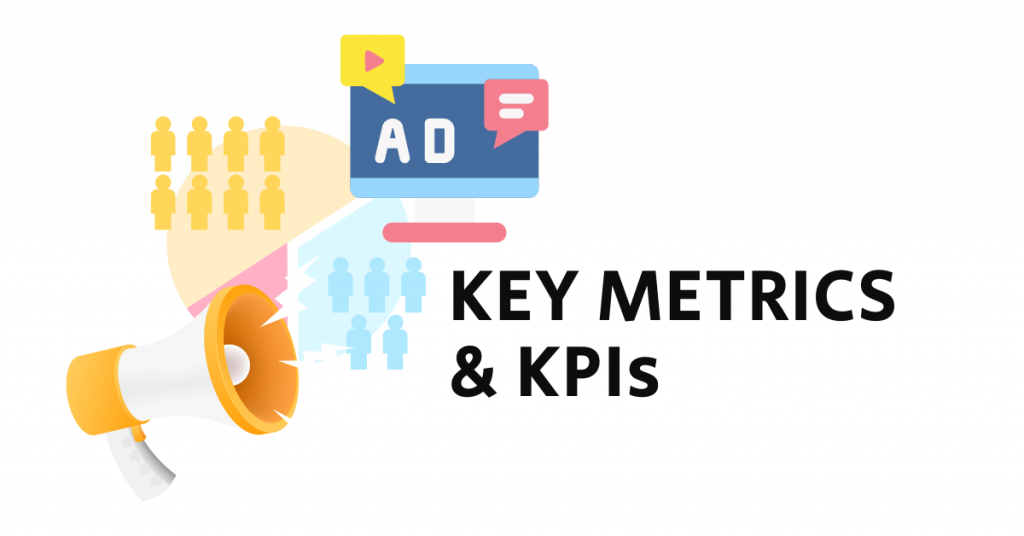1. Define Your PPC Goals
Every successful PPC campaign starts with clear goals. Before analyzing data, define what success looks like for your business. Common PPC goals include:
- Increasing website traffic
- Generating leads
- Driving sales
- Raising brand awareness
Each goal will guide which metrics are most relevant to track. For instance, if you’re focused on lead generation, conversions matter more than clicks.
2. Focus on Key Metrics
Knowing which metrics to monitor is essential. Here are the most impactful PPC metrics to measure success:
- Click-Through Rate (CTR): CTR shows the percentage of people who clicked on your ad after seeing it. A high CTR indicates that your ad copy and targeting are resonating with your audience.
- Conversion Rate: Conversion rate measures the percentage of clicks that result in a desired action (e.g., a sale or form submission). A strong conversion rate suggests effective ad targeting and relevant landing pages.
- Cost Per Click (CPC): CPC is the amount you pay each time someone clicks on your ad. Monitoring CPC helps ensure you’re not overspending on clicks that don’t lead to conversions.
- Cost Per Conversion (CPA): CPA tells you how much each conversion costs. It’s critical for evaluating the efficiency of your PPC spend. Lowering CPA while maintaining or increasing conversions is a common goal.
- Return on Ad Spend (ROAS): ROAS measures how much revenue your ads generate for each dollar spent. It’s a crucial metric for eCommerce or revenue-focused campaigns.
- Impression Share: Impression share shows the percentage of times your ad appeared in comparison to the total available opportunities. Low impression share could indicate you’re not reaching your audience fully.
3. Analyze Audience and Demographics
PPC platforms like Google Ads and Facebook Ads offer insights into demographics, interests, and behaviors. Knowing who engages with your ads helps refine your targeting and messaging. Check metrics such as:
- Device performance: Compare mobile vs. desktop performance, especially if conversions vary by device.
- Location insights: Analyze which regions yield higher conversions, allowing for geo-targeted campaigns.
- Age, gender, and interests: Use demographic data to fine-tune ad creatives and targeting.
4. Evaluate Ad Quality and Relevance
Ad quality is crucial for PPC success, especially on Google. High-quality ads often have lower CPCs and better ad placements. Here’s what to check:
- Quality Score (Google Ads): This metric is based on ad relevance, CTR, and landing page experience. Improving Quality Score can reduce costs and improve ad positions.
- Relevance Score (Facebook Ads): This score reflects how well your ad aligns with your target audience’s interests. A higher relevance score often lowers CPC.
Improving ad quality involves refining ad copy, using clear calls-to-action, and aligning ads with targeted keywords.
5. Track and Optimize Landing Page Performance
A great PPC ad leads to a well-optimized landing page. Even if your ad is high-quality, poor landing pages can hinder conversions. Key landing page metrics to track include:
- Bounce Rate: High bounce rates can indicate that visitors aren’t finding what they expected. Make sure your landing page is relevant to your ad.
- Average Time on Page: If visitors spend little time on the page, they may not be engaged. Improving content, design, and user experience can enhance this metric.
- Page Load Speed: Slow-loading pages can drive visitors away. Use tools like Google’s PageSpeed Insights to ensure optimal loading times.
6. Use Analytics Tools for Deeper Insights
Analytics tools provide data that can help identify trends and areas for improvement. Some essential tools include:
- Google Analytics: Track visitor behavior, assess which keywords and ads drive the most conversions, and monitor multi-channel conversion paths.
- Google Ads and Facebook Ads Analytics: Each platform’s analytics offer in-depth insights into ad performance, audience engagement, and costs.
- Conversion Tracking: Set up conversion tracking to monitor actions taken by users after clicking on your ad. This could be form submissions, purchases, or sign-ups.
7. Perform A/B Testing
A/B testing involves running different ad variations to see which performs best. Regular testing allows you to refine your campaigns continuously. Test elements like:
- Ad Copy: Experiment with headlines, descriptions, and calls-to-action.
- Visuals: For display ads, test different images, colors, or video content.
- Audience Segments: Try targeting different demographics or interests to see who engages most.
Regular A/B testing can reveal what resonates best with your audience and drive better results.
8. Adjust Based on Performance Data
The final step is to analyze and adjust. PPC success isn’t static; it requires constant optimization. Set regular intervals to review campaign data, and consider these strategies:
- Pause underperforming ads: If certain ads or keywords aren’t delivering, pause or adjust them.
- Reallocate budget: Shift budget towards higher-performing ads or demographics.
- Refine keywords: Add negative keywords to avoid irrelevant clicks, and adjust bidding on high-converting keywords.
Conclusion
Measuring PPC advertising success involves tracking metrics that align with your goals, evaluating ad and landing page quality, understanding audience behavior, and making data-driven adjustments.
With careful analysis and optimization, your PPC campaigns can become a powerful engine for achieving your marketing goals.






